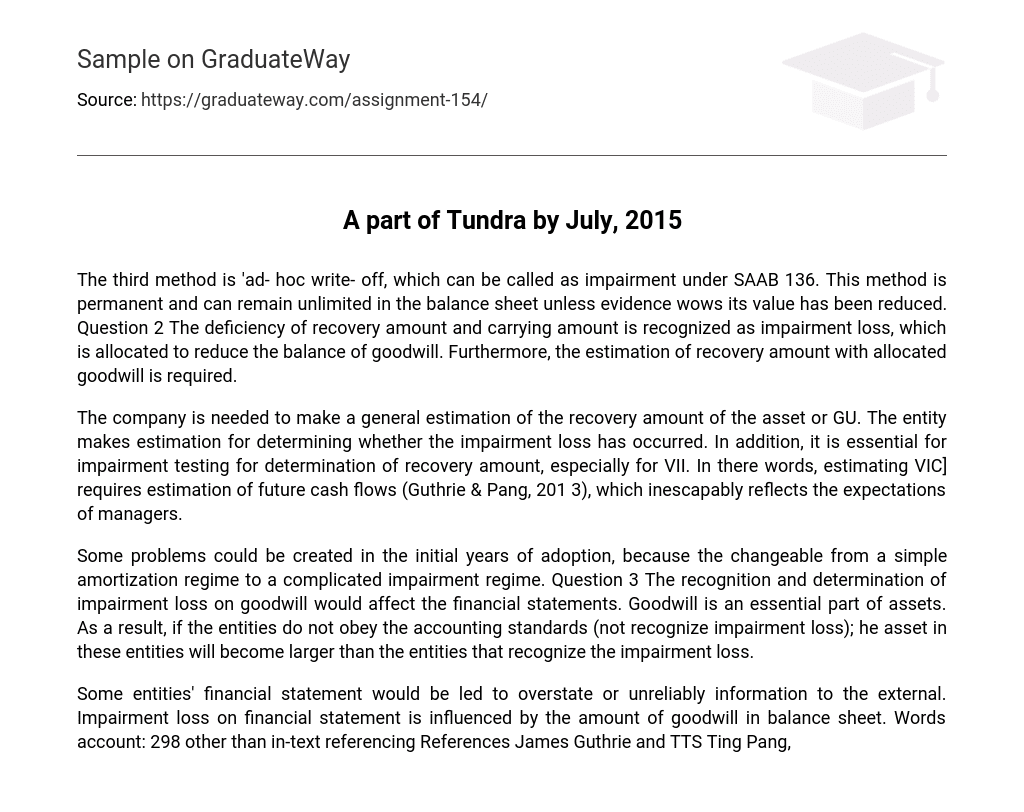The third method is ‘ad- hoc write- off, which can be called as impairment under SAAB 136. This method is permanent and can remain unlimited in the balance sheet unless evidence wows its value has been reduced. Question 2 The deficiency of recovery amount and carrying amount is recognized as impairment loss, which is allocated to reduce the balance of goodwill. Furthermore, the estimation of recovery amount with allocated goodwill is required.
The company is needed to make a general estimation of the recovery amount of the asset or GU. The entity makes estimation for determining whether the impairment loss has occurred. In addition, it is essential for impairment testing for determination of recovery amount, especially for VII. In there words, estimating VIC] requires estimation of future cash flows (Guthrie & Pang, 201 3), which inescapably reflects the expectations of managers.
Some problems could be created in the initial years of adoption, because the changeable from a simple amortization regime to a complicated impairment regime. Question 3 The recognition and determination of impairment loss on goodwill would affect the financial statements. Goodwill is an essential part of assets. As a result, if the entities do not obey the accounting standards (not recognize impairment loss); he asset in these entities will become larger than the entities that recognize the impairment loss.
Some entities’ financial statement would be led to overstate or unreliably information to the external. Impairment loss on financial statement is influenced by the amount of goodwill in balance sheet. Words account: 298 other than in-text referencing References James Guthrie and TTS Ting Pang,





